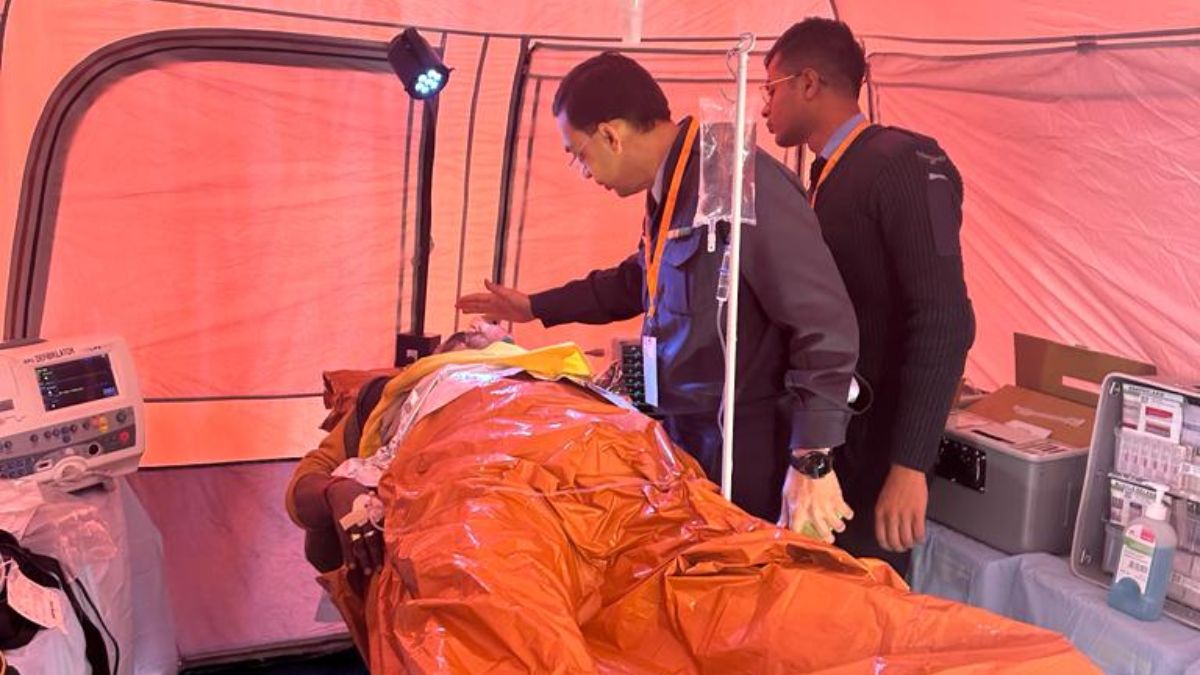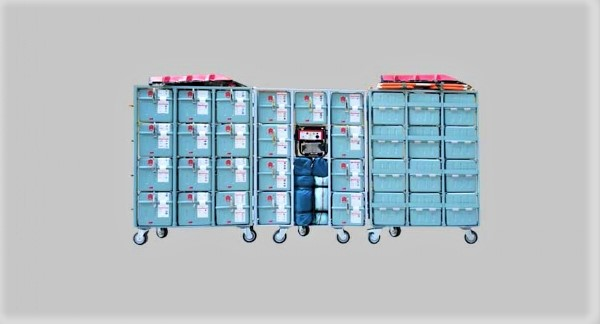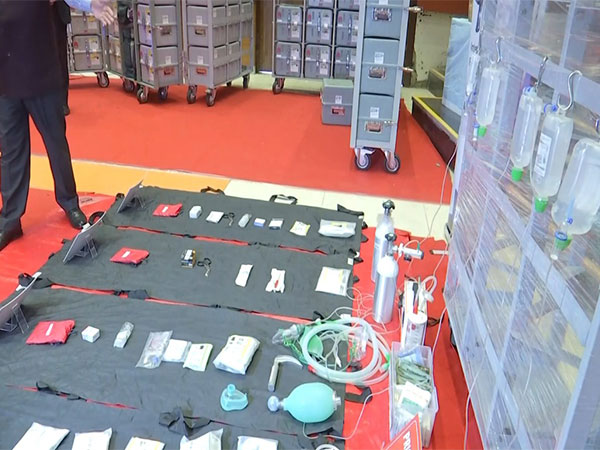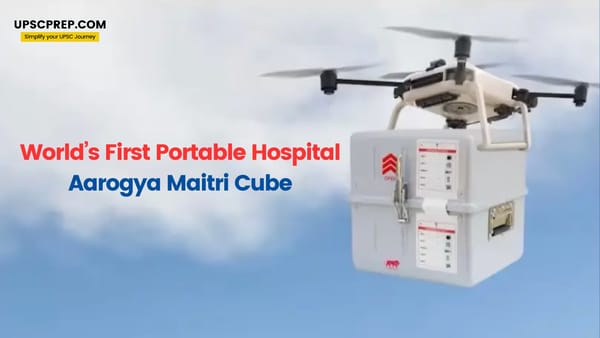Table of contents
Arogya Maitri Disaster Management Cube-BHISHM, a revolutionary mobile hospital equipped with cutting-edge technology, was deployed in Ayodhya to bolster medical readiness and response capabilities during the 'Pran Pratishtha' ceremony.
It played a pivotal role in saving the life of a devotee who suffered a heart attack, collapsing unconscious, during the consecration event.
The Indian Air Force’s Rapid Response Team from the BHISHM Cube evacuated the patient within minutes, capitalising on the critical golden hour — the first hour following a traumatic injury or medical event, which is crucial for successful emergency treatment.
The BHISHM Cube’s advanced facilities and skilled medical personnel ensured that the patient received hospital-quality care on-site, stabilising his condition.

This cube is a part of the broader initiative named “Project BHISHM” – Bharat Health Initiative for Sahyog, Hita and Maitri, is tailored to treat up to 200 casualties, emphasizing rapid response and comprehensive care.
Objectives of Project BHISHM
- Sahyog (Cooperation): Foster collaboration between government entities, healthcare providers, and communities to optimize disaster response.
- Hita (Welfare): Ensure the welfare of the population by providing immediate and effective healthcare services in the event of emergencies.
- Maitri (Friendship): Build and maintain friendly relations through humanitarian aid, both domestically and internationally.
Components of Project BHISHM
- Disaster Management Cubes (BHISHM Cubes): These are revolutionary mobile hospitals that can be deployed quickly to provide medical services during mass casualty incidents and other emergencies.
- Cutting-edge Technology: Incorporation of advanced medical equipment, AI, and data analytics to improve the efficiency and coordination of medical services.
- Rapid Response: The cubes can be deployed within 12 minutes, emphasizing the importance of swift action during the golden hour after an emergency.
- Transportable Components: The unit consists of 72 components that can be easily transported by hand, cycle, or drone, demonstrating unparalleled flexibility.


BHISHM Cubes and its Components
- Versatility in Deployment: Designed to withstand various conditions, they are robust, waterproof, and lightweight, suitable for airdrops and ground transportation.
- Software Integration: Utilizes the state-of-the-art BHISHM software system for inventory management, ensuring that medical supplies are used effectively and are ready for redeployment.
Significance of Project BHISHM
- Enhanced Disaster Response: It improves India's ability to respond swiftly and effectively to disasters, ensuring that medical care is readily available during emergencies.
- Strengthened Public Health Infrastructure: By focusing on emergency preparedness and response, Project BHISHM contributes to bolstering the country's overall public health infrastructure.
- Community Resilience: The project plays a crucial role in minimizing the impact of disasters on communities by providing immediate healthcare services, thereby increasing community resilience.
- International Humanitarian Role: It positions India as a key player in international aid efforts, showcasing its capability to extend assistance beyond its borders in times of need, fostering goodwill and partnerships globally.
The deployment of Arogya Maitri Disaster Management Cube-BHISHMs in Ayodhya for the 'Pran Pratishtha' ceremony is a practical example of the project's application, demonstrating India's commitment to integrating modern technology and innovation in public health and disaster management.
Previous Post